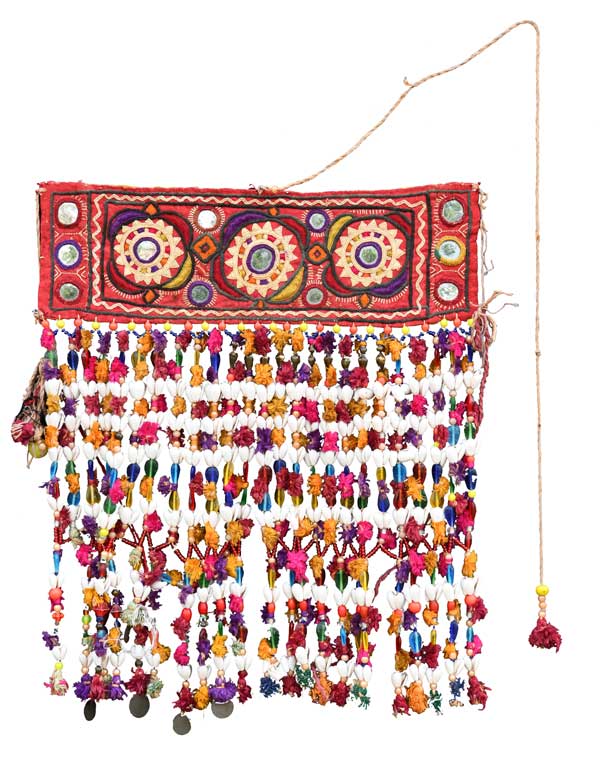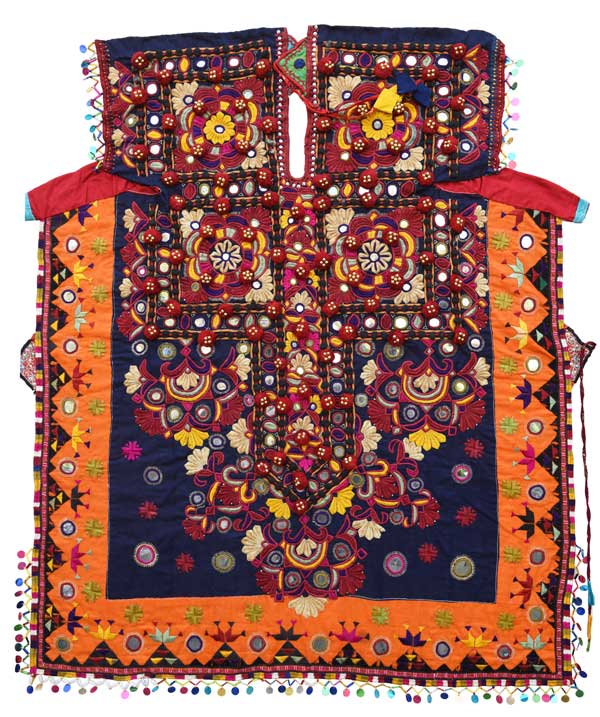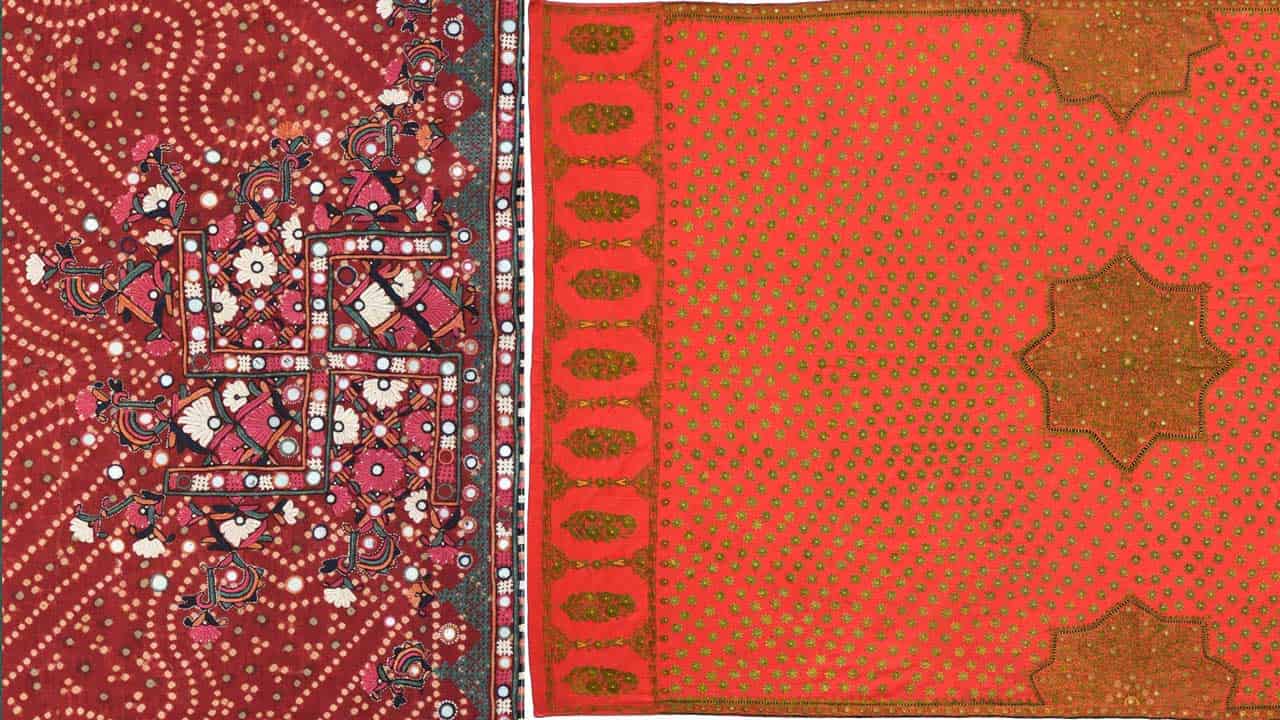Fabric Blossoms in the Sand
Book Review of ‘Flowering Desert: Textiles from Sindh’
“When I asked a Meghwar woman what inspired her to choose colours, she gave me a reply that stayed with me ever since. “Indlath”—colours of the rainbow—she said. How true! If an object could give so much delight to feel and possess, how much more pride must it have provided its creator?”1
The Flowering Desert: Textiles from Sindh presents a one-of-a-kind collection of traditional embroideries and objects originating from the historically diverse Pakistani province. Authored by Nasreen Askari and Hasan Askari, and published by the UK based Paul Holberton (2nd edition: 2024), these garments are often on public and protected displays at the Mohatta Palace Museum in Karachi, also co-founded by Nasreen Askari. The hardcover consolidates the once-vibrant yet now marginalized multi-religious communities of Sindh, blending their traditionally unique materials with vivid illustrations and engaging text.
The book is divided into concise sections covering topics such as a brief history of the province’s people, the various stitches used in traditional Sindhi embroideries, painted and dyed fabrics, and textiles created by indigenous communities like the Jats, Baloch, Rabari, and Meghwar. Home to people of multiple faiths, Sindh had a Hindu minority (29.25%) before Partition, whose communities were urbanized, philanthropic, and resourceful. Prominent families, such as the Amils of Lohana ethnicity, often conducted trade with Indian cities like Bombay and even engaged in international merchandising in Malaysia and Egypt, dealing in valuable handmade textile crafts. This cross-cultural enterprise gave rise to the concept of “Sindhiyat”: a continuing core belief in the identity of the Sindhi people, shaped and shared by both Hindus and Muslims alike.
Post-partition, the Amils and the Lohanas almost completely left the province due to what the authors call “a lack of confidence in the state and failure of statecraft on part of the new government”. Had the Hindu community remained, the book questions how the cultural and religious identities of Sindh might have evolved in a province that also encompasses the country’s arguably only truly cosmopolitan city, Karachi. A strength of the book lies in its ability to foreground these nuances through striking embroideries and intricate stitches.
At the core of these textiles lies the “gaj”—a traditionally embroidered front panel of a shirt or a women’s blouse. Tunics (choli, gaj, kurti), trousers (shalwar, gaghro), and head shawls have stylistically remained unchanged for centuries and are still the most popular choice of garments for traditional Sindhi women, often selected according to climate, geography, and occasion. The decorative pakkoh stitch is the most commonly used, owing to its versatility in making geometric, curvilinear or floral arrangements. Several coloured images show the pakkoh in gaj garments, along with the interlaced Hurmitch, the fine zigzag satin Gontri, the chain forming Zanjiro, and the Kharek which resembles the foliage of the date palm tree.


But amid the dazzling gaj and rich textile-based adornments, The Flowering Desert quietly unveils a bigger, deeper truth: the enduring resilience of Sindh’s people, who live with dignity despite a dearth of elementary necessities like clean water, healthcare, and opportunity. In its sensitive photographs of local men and women— from portraits and community gatherings to artisans at work and views of now browbeaten villages—the book demonstrates the need for protective state level policies for local communities and traditional crafts.
While only adding a few more terms to the glossary and slight revisions offered in the descriptions of the objects, the updated edition is more or less the same as its 2019 predecessor. As a go-to guide for the textile history student, the publication is substantial but not exhaustive, and opens up avenues of scholarship that are absent in the current literature, despite a few out-of-print publications presenting research on textiles from Sindh.
‘The Flowering Desert: Textiles from Sindh’ was first published by Paul Holberten Publishing in November 2019, 168 pages. The second edition was published in April, 2024, 168 pages.
Title Image: Woman’s shawl (odhni), Syed Group, Umarkot, Tharparkar, mid-19th century, cotton embroidered with silk floss. Book front cover, courtesy of University of Chicago Press.
All images are courtesy of Nasreen and Hasan Askari.
Book front cover, courtesy of University of Chicago Press.
Bibliography:
Askari, Nasreen and Hasan. The Flowering Desert: Textiles from Sindh. Paul Holberton Publishing, London and The Haveli, Karachi: A Museum of Textiles, 2024.
- Nasreen Askari and Hasan Askari, The Flowering Desert: Textiles from Sindh, Paul Holberton Publishing, London and The Haveli, Karachi: A Museum of Textiles, pp.12, 2024.s
Nageen Shaikh
Nageen Shaikh is an art historian, critic, editor, and educator. Her work reveals entanglements between networks, conditions of production, lived realities of artists, and tangible materiality in South Asian and global art practices. She has special research interests in artists’ studios and artisanal workshops, material histories, languages, and anthropology. Nageen has worked with the Karachi Biennale Trust, Guggenheim Museum, The Gulgee Museum, and British Council, and taught liberal arts at undergraduate institutions in Pakistan. She has published her research in the Gulgee Museum: A Handbook (Lightstone Publishers, 2025), Journal of Art and Design Education Pakistan, and frequently writes art criticism for Hyperallergic, The Brooklyn Rail, Dawn News, and others.



There are no comments